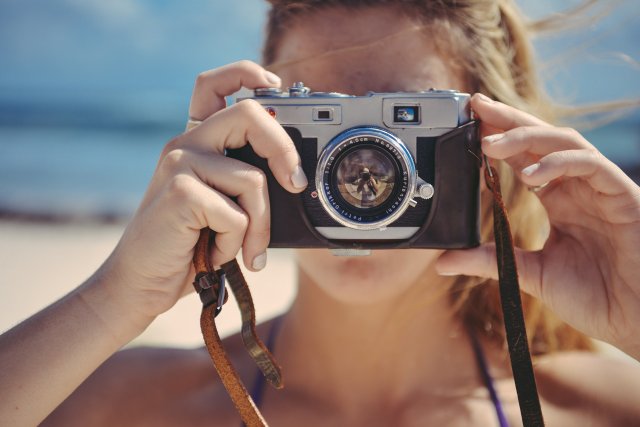When it comes to convenience, you can’t really beat smartphone photography. Easily portable, accessible, quick to share and simple to understand. But if you’re concerned at all about functionality, DSLR photography will take your photo taking skills to the next level.
Do you ever feel like your smartphone is restricting you? If yes, that doesn’t necessarily mean it’s time to jump right to DSLR. While it is fun, useful and higher quality, there are other ways to go about engaging in photography.
But, what even is DSLR photography?

Basically, DSLR are digital cameras that combine both the optics and mechanisms of a single-lens camera, all while including a digital imaging sensor, in turn, capturing clearer, crisper and all-around sharper images.
If you or your business is considering upgrading your head shots, having an office-based photo shoot to upgrade your website – or whatever the need, you’ll want to know your photography options and when to upgrade from smartphone photography to DSLR.
Quality
With a DSLR camera, one thing is for sure; your images will look much cleaner than that of a smartphone photo. Not that smartphones cannot produce quality images, but DSLR cameras offer sharper images than a smartphone could.
A DSLR camera will capture more range of color whereas a smartphone photo would appear much more washed out in comparison. The focus on a DSLR camera will also me sharper. Smartphone pictures when zoomed in will have a more pixelated appearance.
While hobbyist photographers can get away with using smartphones to capture their images, someone who’s looking for a more refined look will opt for DSLR photography.
Storage
A common problem that often occurs with smartphone photos is storage space. We’ve all ran into the problem when we’re trying to capture an important moment and our phones won’t allow us to snap a photo due to lack of storage space.
DSLR is specialized in photo and video exclusively, allowing more storage space to capture more images. While shooting in high resolution – particularly videos can eat up a lot of storage space, the use of SD cards will better cater to your needs.
Price
Usually the deciding factor in choosing which route will be best for you and your company is cost. While it’s true that investing in a DSLR camera may be more expensive, it’s really a ‘pay-for-what-you-get’ factor. Beyond the obvious better images that DSLR provides, there’s other advantages as well including convenience of having a quality device, flexibility, quality and storage.
If your business uses photography often, is considering veering away from the stock image world or is in need of higher end photography needs, you’ll need to decide whether or not the benefits that come with DSLR is worth the extra money.

